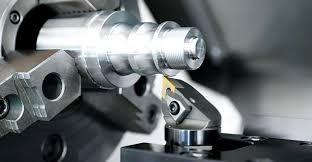
Tooling is also called machine tooling. Machine tooling is the process of creating a design and then engineering tools that are necessary to manufacture parts or components. There are various types of tooling, of which the most common are: cutting tools, dies, molds, patterns, jigs, fixtures, etc. Without the correct tooling, the manufacturing process is inefficient.
The history of machine tools includes bow drills and potter's wheels in ancient Egypt to more fundamental advances in machine tools in the early 1800s in England of the manufacture and use of master plane gages. Some important new machine tools and all in use before 1840 include the turret lathe, milling machine, metal planer, shaper, and screw-cutting lathe. American production of machine tools didn't pick up until WWII, as the output tripled during this time.
Currently, the production of machine tools is limited to about ten countries around the entirety of the world. Some of these countries include the United States of America, Austria, Spain, Switzerland, Taiwan, South Korea, Italy, Germany, Japan, China, and a few others.
The speed and accuracy, the quality of a finished part, its makeup, and the repeatability of manufacture in the production run in high volume, all depend on the characteristics and precision of the tooling. So for the best parts, tooling needs to be designed and engineered to the highest quality.
The price of tooling will change depending on the project because it is reliant on so many variables. However, there is a frequent misunderstanding that tooling is too pricey and sometimes a cost-prohibitive process. Thanks to more recent techniques in engineering, the costs for tooling precision cold forming and CNC machining and are relatively small in most cases.
Various factors go into deciding the amount charged for tooling. Ensuring tooling of high quality requires a wide range of factors to be considered. For example: the tolerances needed for the finished part, as these, will affect the makeup of the tooling; rigidity and mechanical structure of the tool, as this is important to guarantee accuracy with the work piece, quality, and repeatability; the strength of the cutting tool, which has to be good enough to go up against machining forces, especially in volume production that is large; and more.
A lot of companies offering a tooling service carry out this process manually. This can be a time-intensive process - which, can lead to more of a cost for customers. Other companies, use advanced engineering software tools.

